-
Mill Valley Film Festival 45 (Oct. 6-176 2022)
Last edited by Chris Knipp; 11-02-2022 at 09:13 PM.
-
THE ART OF EATING: THE LIFE OF M.F.K. FISHER (Gregory Bezat 2022)
GREGORY BEZAT: THE ART OF EATING: THE LIFE OF M.F.K. FISHER (2022)
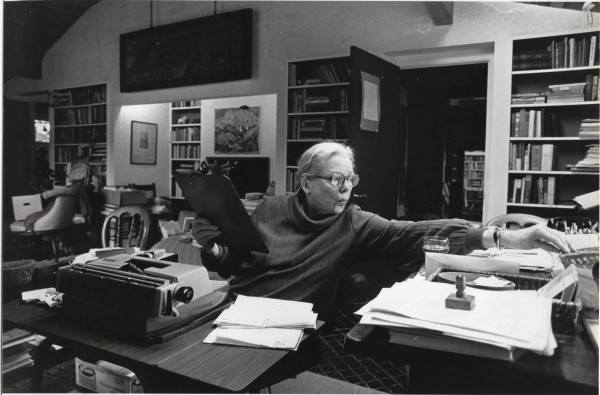
M.F.K. FISHER AT HOME IN CALIFORNIA WRITING
TRAILER
A complicated sensualist
M.F.K. Fisher (1908–1992) is an American food writer, perhaps the greatest one, and she dates from a time when her métier most mattered, because there were so few practicing it. She is the author of 27 books, including a translation of the French classic The Physiology of Taste by Brillat-Savarin. She was praised by W.H. Auden in his introduction to one of her major books, the eponymous Art of Eating, as writing as good prose as anyone in America. She loved food and cooking from the days of her childhood in Whittier, California. She learned more about such things living in France and Switzerland, and through frequent travels, and wrote about them primarily while living in Northern California through a long and sometimes difficult life. much of it spent supporting herself as a single mother. American food was not so good, and it declined further after World War II when many farmers sold out and moved to cities and farms consolidated into factory-like mega-farms. In her beautiful, thoughtful prose, Fisher celebrated the senses and the taste. She made food sexy, and she didn't hesitate to write about sex too, and about life and food and sex as all part of the same thing. Sensitivity to "slow food" and fine food has grown in recent years and the time is ripe for renewed appreciation of M.F.K. Fisher's writing. She got those initials from editors who wanted to mask her being a woman, but - what a great name!
When you learn about who she was, you guess that Joan Reardon’s biography of MFK Fisher, Poet of the Appetites, has a more appropriate title. "Eating" isn't all her life or her writing are about, or all people read her for. Bezat's film fully recognizes this. Using archival film footage of Fisher, her works, and the places where she lived and many interviews with experts and admirers, the film attempts a full and admiring portrait.
But she was a complex writer and person with a complicated life and this film winds up falling short of the je ne sais quoi of a full M.F.K. portrait. It starts off on the wrong foot with a lot of bland blanket praise by a bunch of its talking heads - however distinguished they are in the fields of food and writing, such as novelist and friend Anne Lamott, California superstar restauranteur Alice Waters, and famous restaurant critic Ruth Reichl. They seem to keep butting in, and while they may provide validation (is it needed so much?), they add little to our understanding.
The film also starts off heavy-handedly by quoting from Fisher some relatively ordinary passages where she describes steps in her life, then some of her more generalized words about food and sensuality. The pungency, the specificity, the brilliance and contrariness of her prose, which garnered Auden's lavish praise and others mention, have not gotten pride of place here. We feel some of its subject's complexity slipping through our fingers. We can see why the documentary and the film about Julia Child, that simple blast of enthusiasm (who had a friendly relationship with M.F.K. and spoke highly of her), came across so much more clearly.
The film outlines "Mary Frances'" earliest life clearly enough. Her father bought the local newspaper of Whittier, California, a largely Quaker town (though they were Episcopalians), and she wrote for it while young. She briefly attended a number of local colleges. But she quickly married to be able to go abroad, to Dijon in 1929 with Berkeley doctoral candidate in literature Alfred Fisher (why Dijon we don't learn). This was an opportunity to savor the cuisine of France, to sit in the center of the world, at the Café de Flore in Paris on the Boulevard Saint Germain, to see how the French enjoy eating and life. Then Alfred began to ignore her, and she slipped off with the slim, blond Dillwyn (also known as "Tim") Parrish - in a manner whose sexiness and suddenness is a bit underplayed here. Sadly, Dillwyn, who loved M.F.K., as she loved him, and encouraged her writing as Alfred did not, had Buerger's disease, which required the amputation of a leg and caused rapid decline and terrible pain, and he committed suicide after they had been together for only four years. Then we lose track a bit, interrupted by the endless succession of platitudinous talking heads telling us what a good writer she was, while we're quoted more of her less interesting prose.
It would be nice if anybody gave the dates of the three M.F.K. marriages- they're not even listed in her somewhat inadequate Wikipedia article, which is condemned at the top with the remark, "may be written from a fan's point of view." Graduate student and scholar and Smith teacher Alfred Fisher lasted from 1929 to 1937, painter and illustrator Dillwyn Parrish from 1937-1941, and literary agent Donald Friede merely from 1945 to 1948, when she realized she needed to be alone. She spent her later life with her daughters, and later still, with assistants who helped her write. Toward the end, she struggled with arthritis and Parkinson's, having good and bad body days, and her many ideas for books up until the end much required help from others to carry out.
The film runs its camera over a lot of Fisher's writing, a pleasing if tantalizing innovation, to show how often she appeared in the pages of the much missed Gourmet, in The New Yorker, and in other publications, and hence what a part of the life then she was - and all the books, which from the start garnered praise in the literary columns and were not restricted to style or kitchen sections. We also hear Fisher's own voice, and see her moving and speaking. She had a seven-year contract at Paramount Studios in Hollywood. "I was called a 'junior writer,'" she recounts. "When I was working in Hollywood I was aware that there were men who were absolute nitwits who were producers..." She did what you don't do: she quit after two years. It was then apparently that she translated Brillat-Savarin.
There is much else, but the chronology goes back and forth, and back and forth to Anne Lamott and Alice Waters and Ruth Reichl to hold forth. There is a nice ending moment: a film of Fisher reading from her own work, where she cites a line this reviewer too has long liked: *that Sidney Smith said his idea of heaven was "pâté de fois gras to the sound of trumpets," and she offers a substitute: "fresh garden peas, picked to the sound of a cowbell." She smiles. A wise and pleasant moment, and a nice place to end.
The film, as mentioned, points out how American food, already bland and unsophisticated, deteriorated furtherafter the war, and how in recent decades (to some extent - but while fast food has burgeoned in Europe more and more as well) a sensibility has grown in sympathy with Fisher, with taste, season, farmers, slow food, so she is popular with young foodies. If this film whets their appetites to read her further, it will have done its job.
________________________
*M. F. K., an hourlong documentary by a California filmmaker, Barbara Wornum, released in 1992, was (reportedly) "a comprehensive view of Mrs. Fisher." One would like to compare it with the present film. For a factual review of her life that quotes some really pungent passages see Molly O'Neill's obituary in the New York Times. For more detail see the Wikipedia article, "M.F.K. Fisher." And obviously, we should read her books, starting with the best known ones and moving on from there.
The Art of Eating: The Life of M.F. K Fisher, 85 mins., is having its world premiere at the Mill Valley Film Festival Oct. 11, 2022. Screened in connection with the MVFF.
-
ONE FINE MORNING (Mia Hansen-Løve 2022)
MIA HANSEN-LØVE: ONE FINE MORNING/UN BEAU MATIN (2022)
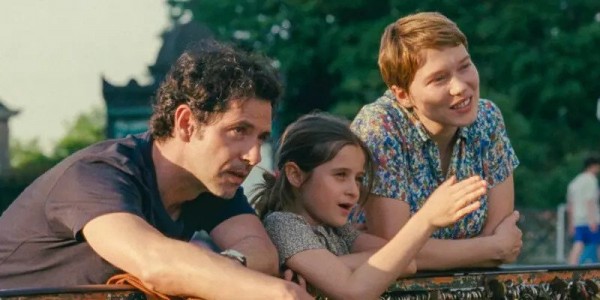
MELVIL POUPAUD, CAMILLE LEBAN MARTINS, LÉA SEYDOUX IN ONE FINE DAY
[Thumbnail review]
Mia Hansen-Løve is in top form here, turning soap-melodrama material into something so rich, intelligent and emotionally direct the result far transcends the genres. Léa Seydoux, dramatically drab, is a lonely widow of five years, a single mom who works as an interpreter and raises a feisty daughter while she and Nicole Garcia, as her mother, her dad's no-nonsense ex-wife, struggle over time to find a decent nursing facility for her philosophy prof father (Pascal Greggory), who has been diagnosed with aneurodegenerative disease. And facing that, she meets unhappily married scientist Melvil Poupaud and a hot affair begins. They both fall passionately in love. Instead of the before-and-after structure of the filmmaker's best films, One Fine Morning drops that neat structural device to honor the intensity of its emotions, plunging into one relatively limited period of time and pushing forward its various threads to a bittersweet conclusion, uncertain, far from perfect, but as good as it can be. A terrific film. This is an intro: a full review will come at US release time.
Last edited by Chris Knipp; 09-22-2022 at 09:37 PM.
-
THE PASSENGERS OF THE NIGHT/LES PASSAGERS DE LA NUIT (Mikhaël Hers 2022)
MIKHAËL HERS: THE PASSENGERS OF THE NIGHT (2022)
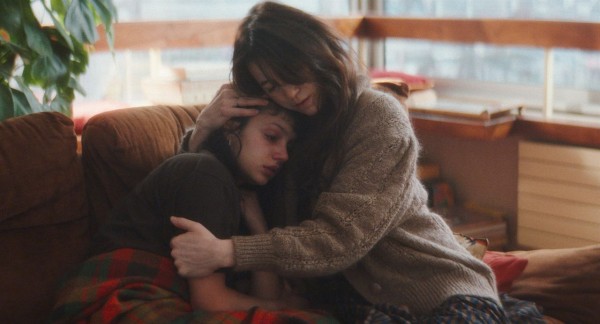
NOÉE ABITA AND CHARLOTTE GAINSBOURG IN THE PASSENGERS OF THE NIGHT
Weeping and wisps of the night
Hers follows Elizabeth (Charlotte Gainsbourg), and her two children, Matthias (Quito Rayon Richter) and Judith (Megan Northam), and a winsome waif called Tallulah (Noée Abita), who Elizabeth picks up at the eponymous nighttime talk show where she works, and who flits in and out of their lives. The time-scheme is a chunk of the 1980's. It starts in 1981 and later picks them up around 1988. Sweet, charming, and touching, this film is impeccably acted. Peter Bradshaw calls Passengers of the Night "a likably unassuming and easygoing movie," and to enjoy it one must not demand too much of it. But it must inevitably play better for the local audience, especially those Parisians for whom the specifically evoked time and place are nostalgic. Otherwise, one is likely to think that not enough happens, and that there is something self-indulgent and repetitious here.
Two problems won't go away for me. One is Charlotte Gainsbourg, with her slightly rough beauty and her voice of breathy sweetness, a big star, really an icon in France, with her joint descent from the legendary singer-songwriter Serge Gainsbourg and the actress-model superstar Jane Birkin. It's impossible to forget for two minutes who she is. If you are a big fan that will presumably be fine. Otherwise, though, it's destructive. The other thing is the jump in time, and using the same young actors for both moments seven years apart. Excellent newcomer Richter may look fine as 22, but then when you think back, he didn't look 15 in the early segments. Nor does either of the other two young people look young enough in the beginning, or enough older in the later ones. Hers is counting on our indulgence on this.
There's a kind of sweet melancholy this film likes to indulge in, and it does it quite well, if you like that kind of thing. French reviewers have been appreciative of the emphasis on "night." Elizabeth is left with the kids in a roomy apartment (with big windows affording a panoramic view of Paris). She's an insomniac. Now she has to get a job. She quickly bombs out of her first due to a lack of a new necessity - computer skills. The late-night call-in talk show helmed by the formidable dame Vanda Dorval (Emmanuelle Béart) turns out to be perfect. Early on, Tallulah turns up, in person, a beautiful homeless girl-child who is helpless, pathetic, irresistible. You may not think her so; the film does.
Noée Abita is a cool actress, but the character of Tallulah in the screenplay by Maud Ameline, Mariette Désert, and Hers is somewhat vaguely conceived. She is sometimes an addict? How does that work? Abita seems more convincing in the later segment when Tallulah has gotten her shit together and can go out on her own. It turns out she's the actress who played the lead in Slalom, (R-V 2021) where she's a teenage ski star with Jérémie Renier as her abusive coach, so there's a natural toughness about her. She's here more for somebody for Elizabeth to show her kindheartedness with and for Matthias to fall in love with in spite of himself. Matthias is a "poet," who isn't very motivated in school. The actor has something distinctive about him.
As happens in small French films the secondary characters are good because good actors come to play them, and Béart is one of the great ones, so her Vanda is very strong, though she only appears now and then. The film is more about weeping and romance. Hence it's important that through her secondary job in a library Elizabeth gets picked up by a gentleman, Hugo, who is taking out a lot of books as a prelude to taking her out. Hugo is played by a very solid, interesting actor, Thibault Vinçon, who years ago played the wicked André Morney in Emmanuel Bourdieu's unforgettable Poison Friends (NYFF 2006). Vinçon has too little to do here, but in his moments he is convincing and strong. There is a mellow father for Elizabeth who comes and goes played by Didier Sandre, who looks right.
Really there is much to like in Passengers of the Night, including the young people's surprise infatuation with Eric Rohmer, by accidentally sneaking into his Les nuits de la pleine lune and being fascinated by the hyper articulate Fabrice Lucchini and the charming, doomed Pascale Ogier. But Gainsbourg is a distraction and so is the time-jump, and you're left with wondering a little bit what happened during this close to two-hour run-time. To enjoy it fully you must buy into its subtle shifts, its delicate emotions, what Marilou Duponchel in the important Paris review Les Inrockuptibles called "l’éclosion sublime de petits riens," "the sublime blossoming of small things." Multiple watches and some knowledge of the French language may be required to tease those out. Or you may wind up feeling as the reviewers for Criticat and Cahiers both do, that Hers is just too leery of dealing with the hard stuff.
The Passengers of the Night/Les Passagers de le Nuit, 111 mins., debuted at Berlin Feb. 2022, showing at a half dozen other international film festivals inclulding Sydney, Taipei Hong Kong, Jerusalem and BFI London. Screened for this review as part of Mill Valley Film Festival, Oct. 6-16, 2022. AlloCiné press rating 4.0 (80%). Metacritic rating: 70%.
Last edited by Chris Knipp; 10-02-2022 at 01:42 AM.
-
PATH OF THE PANTHER (Carlton Ward Jr. 2022)
CARLTON WARD JR.: PATH OF THE PANTHER (2022)
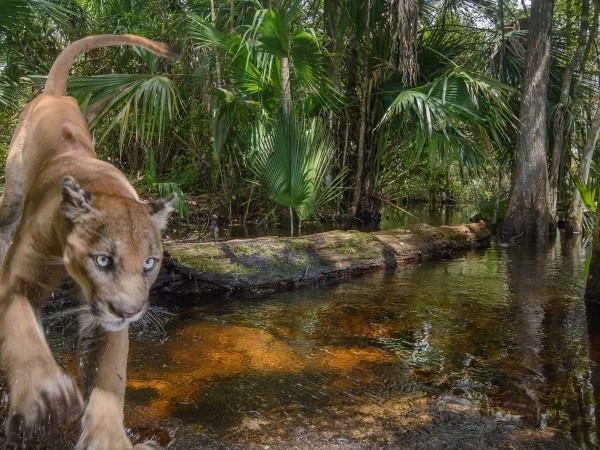
PHOTO CAPTURE BY CARLTON WARD JR. IN PATH OF THE PANTHER
Conservation photog Ward tracks and protects the Florida panther
In Path of the Panther Carlton Ward Jr., a wildlife photographer from a family many generations in Florida who has published a cover story on this subject in National Geographic that previews a coming fifty dollar National Geographic book, describes how veterinarians, ranchers, conservationists, and indigenous people of the southern Everglades are joining forces to track and protect the endangered Florida panther, the last surviving subspecies of puma in the US, and the the Florida Wildlife Corridor in which he can survive. It's an interesting film about the last big cat surviving in the eastern United States, partly because it's so much from the point of view of Ward himself. He works with remote "camera traps" set up to take hundreds, even thousands, of photos, hoping to show the movement of the panthers. The most emotional moments in the film are those of his bitter disappointment when a camera trap has been sabotaged and a month-long setting has borne no fruit, or it has been destroyed by a storm; or his joy when his has captured a female panther with young cubs or a vigorous male leaping high in the air. They are wonderful creatures, and to look into their dyes close up is a hypnotic experience. It is looking into the heart of the wild, the nature we are losing.
Ward is good at showing the involvement of different factions. There is a longtime local ranch family man called Elton Langford who speaks with a deep local patois, a strong ally: his enemy is the same as the panther's, real estate developers, who are both destroying panther habitat and wiping out ranches. Ranchers are as much an endangered species as the elusive, beautiful cats. A Native American speaker woven into this film expresses a similar viewpoint, as well as speaking the language of closeness with the wild, in which the panther was seen by ancestors as an important teacher. In fact as I watched I was reminded of Ale Pritz's excellent documentary The Territory: The
There is an excellent 2019 article by Eric Seeger, one of several in The Nature Conservatory magazine, about the recent history of the Florida panther, his place in US wildlife, and action to protect habitat, which may provide a more complete picture than Ward does in this film. Or at least reading the text made the picture come through more clearly. The advantage of Ward's film is that it's not a dry talking-heads documentary. The good looking Ward is like a movie star of his own film, and when Path of the Panther begins it feels like a feature and not a documentary at all.
The story begins with panthers run down on highways, and one of the threads is of a female with multiple injuries whom a group dedicated to the panther nurse back to health and eventually release back into the wild.
The Nature Conservancy piece mentions that 900 people move into Florida a day, and it shows, as the film does, the sight of suburban developments, masses of close-nested little - or big - houses built by developers on newly acquired former ranch land. Along with this, there are state plans to build new toll roads. A recent plan Ward follows to build three such roads was blocked because the public opposed it. The roads run across panther range territory and cut it into pieces. They also enable the developers to extend their tentacles and continue the paving over of the land. Why these suburban developments work this way, what these people do, the film doesn't go into. One can't help wishing they didn't build sky scraper apartment buildings in cities concentrating people in urban centers and leaving natural and ranch land to nature and the ranchers.
There is much more in Ward's film. A complicated story is of the specifics of the everglades. The Nature Conservatory article explains how the panthers moved into this territory to survive. Now it is becoming filled up with water. Nature is complicated. Path of the Panther is a taste of that which may inspire some viewers to want to know more.
Path of the Panther, 88 mins., is a film from Grizzly Creek Films. It was screened for this review as part of the Oct. 6-16, 2022 Mill Valley Film Festival.
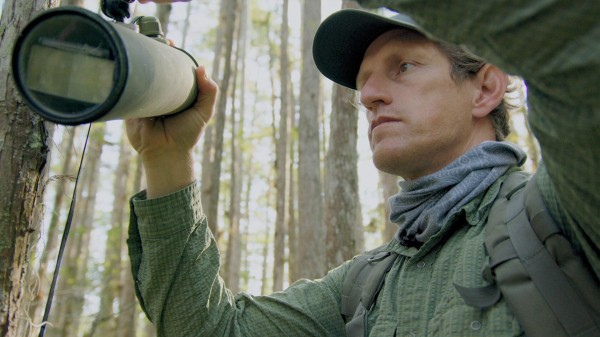
CARLTON WARD JR. IN PATH OF THE PANTHER
Last edited by Chris Knipp; 09-23-2022 at 08:12 PM.
-
WE DREAM OF ROBOTS/SOÑAR ROBOTS (Pablo Casacuberta 2022)
PABLO CASACUBERTA: WE DREAM OF ROBOTS/SOÑAR ROBOTS
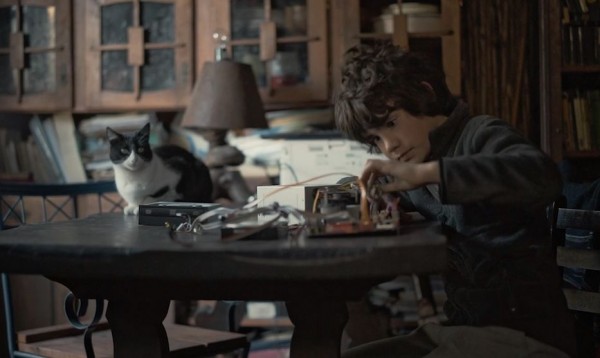
TRAILER
Uruguayan kids competing with robots form lasting bonds and inspire plans for the future - and your own mind may be blown
This delightful documentary is about hope, progress, and the future. It is in chapters. It first introduces us to some of the young people. Some of them appear mere children - fifth graders often vary in size - but when they start to talk, they are brilliant. The fascinating thing is that they are from obscure towns, some mere villages, in remote parts of Uruguay, a country that borders on Argentina and Brazil, but is much smaller and less noticed. One of them travels four hours each way to go to school. He reminded me of the young winner of an annual oratory contest in France in the inspiring 2017 doc Speak Up/À voix haute: La force de la parole, who also traveled hours to and from school. We Dream of Robots is a beautiful and well made film, visually a delight, especially the early parts, and it has a beautiful heart.
Sometimes hardship inspires. Maybe not having the internet, as is the case for many of these kids, can be an advantage, and not having a smart phone, also the case for some, makes you rely on yourself, and think. When these kids get together, the level of talk is impressive. They're thinkers. They could interview Noam Chomsky. The burden of this film is that the worldwide exploration of robotics by young people, and the big international competition held for the first time in Latin America, which two teams of the Uruguayan kids attend competing against 70 teams from all over the world, and which is the penultimate chapter - with one of the Uruguayan teams coming in third - inspires thinking about science, and about progress, and solving real problems, big ones.
One boy recounts that the young people in his area had been experiencing an epidemic of psychological issues (This has been widespread in the US too - why? The stresses of the world can't be escaped, even sans internet.) Kids were cutting themselves right and left, he says, and there were teen suicides: but the joint involvement in robots changed that. It created community, it gave the young people a new lease on life, and the general mood improved, the self-harm ended.
A "robot" is a gadget, a block of lego shapes - that runs around on a maze. It goes over obstacles. It raises and lowers things. It stays within limits. It can have any shape you want. Working on robots, these scientifically gifted kids conceive of all kinds of solutions, like developing environmentally safe transportation, like clean power, like carrying automation further in industrial supply and shipping so people can focus on the higher level technical problems. Robotics is an entry into the whole world of computer animation and design. As one bright kid says, "Everything is interconnected."
The age level for the international convention-contest is 9-16. Mathematical and to some extent scientific talent can come early, like musical talent, one of the reasons why one of the leading team members ultimately is a little guy, and why this film is so exciting and inspiring.
It's nice to see something upbeat. But apart from the remote, hardscrabble, agrarian envononments these kids mostly come from, the contest is extremely stressful. Part of the contest is exchanging your robot with another contestant's, learning to operate it, competing using the other person's technology. This is very challenging, as well as a last minute change in the ground rules of the game, and obviously teaches teamwork and quick thinking and improvisation. But it's also all very intense and nerve-wracking, a contrast to the kids' quiet rural world in which they developed their ideas and built their systems.
And yet they succeed, and their joy is a delight to behold, the hugs and the crying. But then, heartbreak comes in the year following, when the global Covid pandemic arrives, and despite the Uruguayan team's great showing and the third place for one of them, the competitions are shut down for two years! They go from joy and new self-worth to devastating disappointment.
But they're kids, they are tough and adaptable. The sparse rural environments and long commutes made them tough. The final chapter is therefore a story of compromise and regrouping and hope. The Uruguayan kids on the winning team know that this success in the international competition is the stuff that lifelong friendships are made of. The other Uruguayan youths decide they enjoyed meeting and working together so much they want to go on meeting, and, doing so, they discuss and work on all sorts of new things. Ultimately, they realize their experience and their conversations have changed them - even for some like one outspoken girl who has decided not to go into science but into arts - and that continuing with the international competitions isn't necessary because their lives and outlook have already been changed forever. This is a film for Uruguayans, where it was shown in movie theaters, that revolutionizes their self-concept and above all their notion that the people of the interior of the country are backward or limited and without potential. Not so.
It is nice to see a documentary that is so positive. The kids are absolutely charming, vibrant, impressively smart, and cute. Good for ages 10+, I Dream of Robots is in Spanish with English subtitles. This title is also available via streaming and it the North American Premiere.
Pablo Casacuberta, who was born in Montevideo, Uruguay, is not only a filmmaker but a writer and visual artist. He has long been a fiction writer and has won Uruguayan National Literature Prize and having trained as an artist in Sheffield, he exhibited in New York, Barcelona, Buenos Aires, Yokohama, and Venice. In film/video he started as a producer of Alberto Cuaron's Children of Men in 2006. He was a crew member of Terrence Malick on Knight of Cups in 2015 and worked on the TV documentary series "Tu Casa Es Mi Casa " (2021). In We Dream of Robots, he struck documentary gold.
We Dream of Robots/Soñar Robots, 85 mins., was screened for this review as part of MVFF45, the Mill Valley Film Festival. It has been showing in multiple venues in Uruguay but it is not included in his filmography on IMDb yet.
Last edited by Chris Knipp; 09-28-2022 at 12:19 AM.
-
PROVO (Emma Thatcher 2022)
EMMA THATCHER: PROVO (2022)
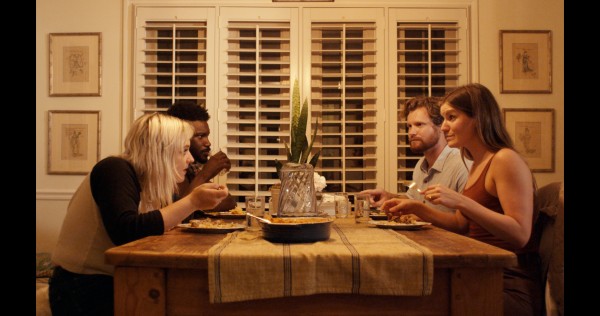
EMMA THATCHER, HUNTER BRYANT, JAY HOBSON, BAILEY CASTLE IN PROVO
A wild lapsed Mormon comes home for a dying father
Emma Thatcher apparently wrote, directed, edited, and stars as Elizabeth, or Liz, the blowzy, dissolute thirty-something bleach-blonde main character, who goes on a road trip from Chicago to Utah with sex partner Geoffrey (Hunter Bryant) when she learns her estranged Morman father is dying of cancer and in hospice care at his home in Provo. In short, a road trip, and aside from the occasional blip, a moment of over-imaginative editing, and a dull ending, this is a distinctive one in which Thatcher's writing, directing, and acting shine.
Yet nobody knows anything about this film, or has said anything about it on the internet, except for Natt J. Weinstein, a User reviewer on IMDb, who saw it at the Chicago Underground Film Festival in late July and wrote a glowing little review of it, calling it "genuinely authentic and compelling." Indeed, the oddball interactions of Liz and Geoffrey, who urges Liz to make the trip to Provo and offers to keep her company, are often surprising and specific in ways that happen only in the best movies. Weinstein mentions Five Easy Pieces, Sideways, and Alice Doesn't Live Here Anymore.
Liz is a party girl. She wakes and bakes, really throws back the booze, and is promiscuous. It all seems to be a reaction to the trauma of growing up under a very strict Mormon father in Utah. She gets the news about her father's imminent demise from a step-sister, Kathryn (Jessica Ervin), whom she has never met but automatically dislikes, and who says she should come to say goodbye to their father. She brings a package to Liz's apartment in Humboldt Park. It's a framed picture of the Mormon founder Joseph Smith, a "slap in the face," someone says later. When the goodnatured Geoffrey, after sex with Liz, hears about her father, he is enthusiastic about going.
Geoffrey, a sophisticated African American, talks hip, but is a self-confessed "nerd." He drinks, but not on Liz's level, and he doesn't smoke cigarettes or dope. He had a nice father. He's not messed-up and is a more grownup person, good-natured. Why is he so attracted to Liz? Well, opposites attract. A moment of truth comes when during the trip - which includes some quite specific motels - he suggests that when they get back in Chicago the two start to date, even long-term. Liz spots that he's even envisioning marriage and he admits that he loves her. What perhaps should happen then is that they'd have a huge blowup and she'd short circuit his love; at least it should get more complicated now. Instead Liz does a brief runner but they're soon back on the road as befpre and it's simply left up in the air.
Liz curses Kathryn and gives the impression her father was a monster (though she won't go into details, simply relishing the idea of throwing the little framed Joseph Smith portrait, which she's brought along, in "his dying face." It is therefore wonderfully satisfying for us when she gets the call from Kathryn and learns her dad has died and bursts into tears and cries and cries. She does definitely want to go to the funeral, and this never wavers.
All these scenes of course are staged in Liz's car, in motels, by the side of the road, alternating with glimpses of flat grassland or nighttime with the two travelers in silhouette. This all works well, though the score were not a little loud. One of the best moments of the whole film comes is when Liz and Geoffrey stay with Jordan (Jay Hobson), Liz's liberal Mormon cousin on her mom's side and his girlfriend Lindsey (Bailey Castle) who are "living in sin," have a little kid who has nightmares, and drink beer and coffee. They are "boring as fuck," LIz and Geoffrey confide on the single couch they've crowded onto, breaking Mormon rules against bed before marriage, but "seem really happy" though Liz and Geoffrey also think that may be fake. Real or fake, the couple and their little girl are precise, lifelike creations, a final proof of the filmmaker's skill at casting, writing, and direction in this little film that makes conventional situations come alive. Emma Thatcher deserves more attention.
Provo, 87 mins., debuted July 9, 2022 at Cheyenne (Wyoming International Film Festival), where it won Best Narrative Feature, Best Actress, and the Audience Award; later in July at the Chicago Underground Film Festival; and at half a dozen other US festivals. Screened for this review as part of the Mill Valley Film Festival (Oct. 6-16, 2022).
Last edited by Chris Knipp; 10-02-2022 at 01:25 AM.
-
FINDING HER BEAT (Dawn Mikkelson, Keri Pickett 2022)
DAWN MIKKELSON, KERI PICKETT: FINDING HER BEAT (2022)
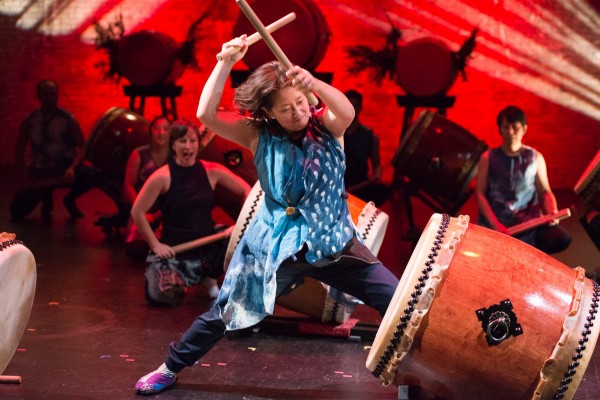
JENNIFER WEIR IN FINDING HER BEAT
Women who have entered the macho world of Japanese Taiko drumming give a historic collective performance
Just between you and me, Japan has one of the most macho, misogynistic, women-manipulating of the first world cultures. This is not dwelt upon in this documentary. It is an enthusiastic postcard from some leading female Taiko drummers and from an historic concert they played in. But it is something that adds excitement to the story the film tells about women who have entered the formerly all male world of Taiko drumming, and who gather for a joint "HerBeat" performance in Minnesota in the dead of winter as the Coronavirus pandemic is coming.
It's a surprise since everything in Japanese culture seems to be ancient, to learn that while the big drums go back to the sixth century, Kumi-daiko, which an extensive Wikipedia article on "Taiko" tells us is the name for performing on Taiko for the public, didn't start till after WWII, in the fifties and sixties. It was only more recently that women wangled their way in. But it's also true that despite all the traditionally Japanese lore and ritual surrounding the drums and playing them, there are taiko drum groups all over, most notably in Australia, Brazil, North America and Italy. One can see in this dispersal and variety a wedge into Japanese hegemony and male domination, which isn't so rigid in other first world countries.
The focus is on some women who have made a mark in this field. The filmmakers follow them and interview them from Minnesota to Japan. The film climaxes and bookends with a "first time, historic" performance gathering some of the best women Taiko performers from Japan and North America at the Ordway Center for the Performing Arts in Saint Paul, Minnesota, including stars from Japan who had never played together in Japan. Jennifer Weir, who is of Japanese descent, and director of TaikoArts Midwest, is a leading figure of this event. She, her wife Megan Chao Smith (a Korean adoptee from North Dakota), and their daughter, Josie, who live in Minnesota, are featured. Megan lived, trained and toured with a professional performing Taiko group, in Japan, a great experience, though she withdrew from it because she thought it would be the end of her.
Also present here are Chieko Kojima, founding member of Kodo Taiko Performing Arts Ensemble, based on Sado island; Tiffany Tamrabuchi, a Taiko master based in Sacramento, California, who brought Chieko to California to perform years earlier; and Kaoly Asano, a dynamic performer with a sweeping mane of hair, who represents Gocoo, of Tokyo. They and more, including Mayumi Hashimoto and Iris Shiraishi, will be on stage for the exciting Minnesota performance. Many have Japanese names, many understand Japanese. Kaoly Asano is a person who keeps drawing our attention, because of her presence, her style, and the way she bravely integrates into what remains still primarily an Anglophone production effort. Her special piece called "Eleven" (referring to the March 11, 2011 Japan earthquake and tsunami, and also September 11) is one of the highlights of the show.
This film spends a lot of its time focusing on the run-up to the Minnesota show day by day, though it also manages to show highlights of the show itself. The planning and rehearsals are a complicated business, in which Jennifer works to let all the women be themselves yet coordinate them into a show while the winter temperatures are low and finally the Covid pandemic is creeping on and some of them get sick, while others are exhausted from the hard work, the close quarters with a lot of strangers, and the stress of Minnesota winter. Above all this is a celebration for these women of what they have accomplished and a sharing of their different life experiences all of which converged in dedication to Taiko. If we feel a little of what these very diverse performers and this lucky audience felt on this historic night in Saint Paul, the film will have succeeded. (I hope it was not a super-spreader event.)
Finding Her Beat is an ebullient and hopeful film that will appeal to music fans as well as feminists. It's a thoroughly conventional documentary in form, and just as the stage is crowded in the titular performance, there is the feeling that the dual directors are trying to cram a little too much in and might have fared better with fewer, more striking moments. But the feeling and the message are too strong to object.
Finding Her Beat, 129 mins., premieres at Mill Valley Oct. 9 and 11, 2022. Produced by TaikoArts Midwest and Emergence Pictures.
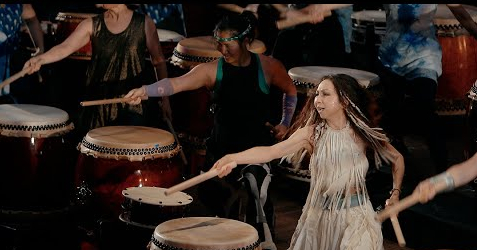
KAOLY ASANO AND "ELEVEN"
Last edited by Chris Knipp; 10-02-2022 at 09:59 PM.
-
THE YOUNG VOTE (Diane Robinson 2022)
DIANE ROBINSON: THE YOUNG VOTE (2022)
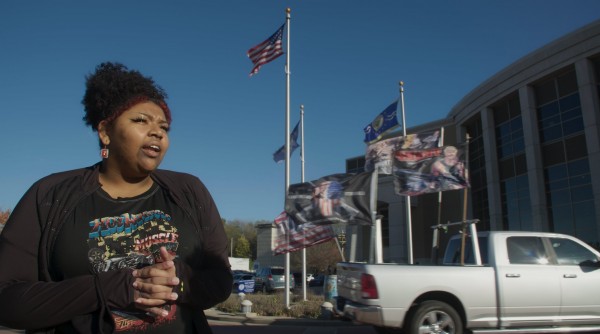
ARIANA IN THE YOUNG VOTE
A part of the vote that can change American politics
The director, Diane Robinson, has moved from education to filmmaking and this short documentary, hot off the press, is the result. It's a film about, and for, the younger generation of 18-29-year-old voters. They are now the largest block of voters and their power has not been felt. Though this is not a point of the film, because it would be inappropriate, we can note that, because they are predominantly liberal, this block of young voters could shift American politics away from the recent Fox News-promoted trend to the right.
The problem in the way of that is a feeling the young generation has of disaffection and hopelessness. It also emerges that US schools are weak on teaching civics. Kids grow up not even knowing how American government works, sometimes not really grasping that they live in a democracy.
We meet a succession of young US political activists. The articulate, vigorous Sophia, age 24, is a campaigner. Her first vote was for Hilary Clinton. Disappointed at Hilary's losing, she learned half the young vote - the largest younger voting generation in American history - didn't even participate in the election. Actually only 40%, 23.7 million, of the 18-29 age vote turned out at the polls. Young activists subsequently worked hard to change that, the film shows, and the 2020 national presidential election turnout had more youth vote than ever before.
Some young activists shown, rather than focusing on voting have taken to the streets to demonstrate in the wake of the death of George Floyd and the Black Lives Matter movement. Key in this are some leading activists like the Parkland kids who started #neveragain to fight the NRA and promote gun control after 17 at their school were killed. David Hogg, their most visible personality now, is seen giving a speech, but this group is mentioned, not directly interviewed.
Another focus of this film is the campaign for Amendment 3 in Florida to bring an open primary system so the two major parties don't control elections. There are still 15 states where the primaries still are sewn up by the two parties. (The Florida amendment lost, but California's won on the second vote, as saddened 16-year-old Elena, a Amendment 3 campaigner along with Dariel, notes.)
Still another focus is on gerrymandering, and other major efforts primarily by Republicans to reduce the vote in states all over the nation. It's been effective, but people have shown they'll still go out and vote even against all the obstacles, and the 2020 turnout was dramatically different from the 2016 one in which Trump won.
The cross section of activists includes Ariana, from Louiville, Kentucky, a university student activist who took to the streets and was arrested with her white high school teacher to protest police brutality and believes that is more important than voting right now. She and her white teacher were treated differently by police. Also important in the film is Liz, a DACA immigrant from Mexico who cannot vote but works as an activist in Dallas to get out eligible Latino voters.
I won't go into all the many salient facts and numerous vibrant young activists heard from Suffice it to say that this film is informative for anyone. But it might best be watched by young Americans, voters or not (such as Liz). They need to be informed, they need to vote, and this documentary makes that clear and is full of inspiring role models.
This clear, urgent film shows talking-heads docs can still matter. The numerous young activists who speak show young viewers that people who look like them are out there fighting to get out the vote, and they can too.
The Young Vote,, 67 mins., debuted as a selection in June 2022 at the American Black Film Festival (Miami Beach, FLA), was a recppient of a Black Voices for Black Justice awards and an Impact Docs Award. Other information can be found on the film website. It was screened for this review as a part of Mill Valley 2022.
Last edited by Chris Knipp; 10-02-2022 at 10:10 PM.
-
FAULTLINE (Rob Nilsson 2022)
ROB NILSSON: FAULTLINE (2022) MVFF45
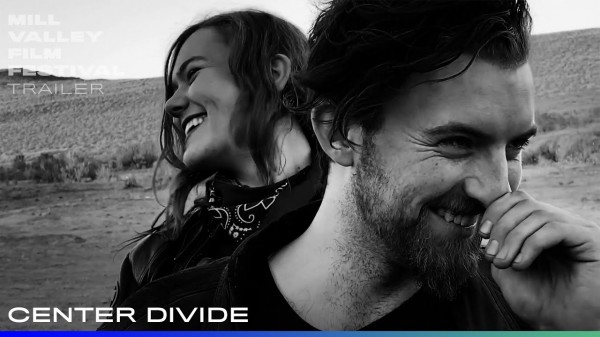
In stark western landscapes, the search for the father comes to an end
This is the third feature in eighty-something filmmaker Rob Nilsson's vivid, multi-character black and white Nomad Trilogy saga. The first two are Arid Cut and Center Divide and they are all held together by a young couple, Rail (Nighttrain Schickele) and Mitra (Emily Corbo) traveling across the American West. The guy, Rail, is looking for his father, Bert Neville, whom he has never met. All three features have been introduced at successive Mill Valley Film Festivals, in 2019, 2021, and 2022. Originally inspired by John Cassavetes' 1959 improvisational classic Shadows, Nilsson puts together his films through finding people to act in scenes and having them improvise, building the individual scenes largely around the people through the course of his "citizen cinema workshops." The film, shot on two handheld iPhone 11's, has a rich, evocative contrastiness, like the photographs of Bill Brandt or the late Willliam Klein, and make much use of closeups and intense, emphatic dialog. If one reads the three summaries of the trilogy's parts on IMDb, one understands why Nilsson has his own definition of the word "epic."
In the first film in the trilogy, Arid Cut, homeless people driven out of an encampment because a race track is being demolished head out for open country. A couple of lovers on a motorcycle are going north (Rail and his girl) going to look for a place called Arid Cut in search of his father. Why Arid Cut? Because Rail has found a book by that title by Bert Neville.) There is also a group of wildcat carpenters and a stowaway, and other characters. The second film, Center Divide,is a road movie wherein various travelers meet up and the search for Arid Cut (not on any map) continues. Part three, Faultline, the present film, takes place deep in the desert in Nevada and Northern California and a couple of ranches that they find. I am quoting here from Rob Nilsson himself in a 2021 MVFF interview where he was talking about Center Divide, which debuted then.
Some pungent scenes early on in Faultline occur in bars, a favorite venue for Nnilsson. I like how one character declares that most of the world's conspiracy theories originate in bars and move out from there. Rail and Mitra first met, they say, dancing in a skateboard park, but they have a tendency to squabble. After one such argument Rail goes off leaving Mitra in a bar, where the venerable lady bartender offers to give her a place to stay till she decides what to do. Rail goes off to find some friends who get in touch to say they are lost in a wilderness. We are in Modoc County and Rail declares himself to be part Modoc tribe. Eventually he and Mitra are reunited, and eventually he finds a man who says he is a father and they embrace and the father declares his love, but the father tells Rail not to come around any more. And the film ends with a trail of figures silhouetted across a dramatic horizon, like in Ingmar Bergman's Seventh Seal. There are no shootouts, guns drawn, or Cormac McCarthy bloodbaths here, but the personalities seem very western, as is the intentional turning away from cities and embrace of the desert.
The Bergmanesque scene shows Nilsson aspires to grandeur, and he likes by his own admission to steal for a moment the most "epic" natural settings. His workshopping means of production on the other hand draws often on both stylish and humble, craggy qualities in the people he films with his intense iPhone lenses. The acting is homegrown and works sometimes better than others. The editing is smooth and pretty inventive, but there are longueurs and inexplicable jumps. Maybe this didn't need to run for 155 minutes. Sometimes the journey could have moved forward faster toward its conclusion. Rob Nilsson films are an acquired taste. What seemed most satisfying from first frame to last was the cinematography. Faultline really has an impressive, dramatic look. The sharp chiaroscuro black and white images of faces, figures and interiors or landscapes are always framed handsomely.
Besides Train Schickele and Emily Corbo as Rail and Mitra, other lead actors are Russell Murphy as Travis, Tony Milliner as Ziggy, Lydia Becker as Karin, Don Bejema as Bed, Dan Da Silva as Dane, Mia Perez as April, Zelma Iveson as Zelma, Rosemary Nelso(n as Violet, Chris Damm as Ben, Galina Paasternak as Svetlana, Puneet as RP, and Dante Dunn as Taylor. Twenty-seven other cast members are listed in ther closing credits.) An article by Andrew Gilbert in Berkeleyside last year about the middle picture reveals that Nighttrain Schickele himself has "only vague memories" of his late father, David Schickele, who was a "musician, actor, and filmmaker "whose precious few films are being preserved by the Pacific Film Archive." But then, separating life from art is rarely a simple equation in the world of Rob Nilsson. The confluence between actor and character, Gilbert points out, is typical of Nilsson's way of working. He doesn't like to use "actors" but make fictions out of people "being themselves." The article provides more about Nilsson's loose production company, Bricolage, and is key members, as well about his working method and the philosophy behind it. As much as his sui generis filmmaking, Nilsson is notable for how clear and well worked out the ideas behind that filmmaking is. That may be as memorable as the work itself. He expresses some of his lively ideas about current cinema and reviews his own work in a 5,000-word piece in a July 2021 issue of Senses of Cinema. There is very little else to be found about him on the internet.
Faultline, 155 mins., debuts at Mill Valley Film Festival Oct. 2022. Rob Nilsson received the 1979 Camera d’Or at Cannes for his feature Northern Lights and the Grand Jury Dramatic prize at Sundance for his 1987 Heat and Sunlight. He is currently receiving numerous lifetime achievement honors at international film festivals.
Last edited by Chris Knipp; 11-02-2022 at 09:11 PM.
 Posting Permissions
Posting Permissions
- You may not post new threads
- You may not post replies
- You may not post attachments
- You may not edit your posts
-
Forum Rules



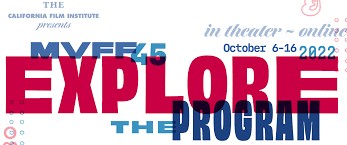

 Reply With Quote
Reply With Quote











Bookmarks